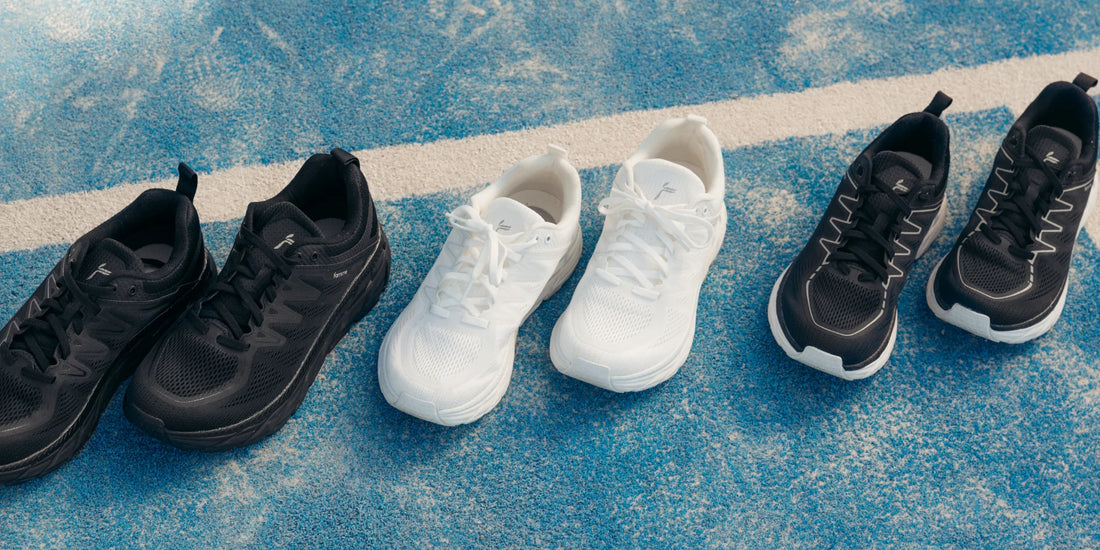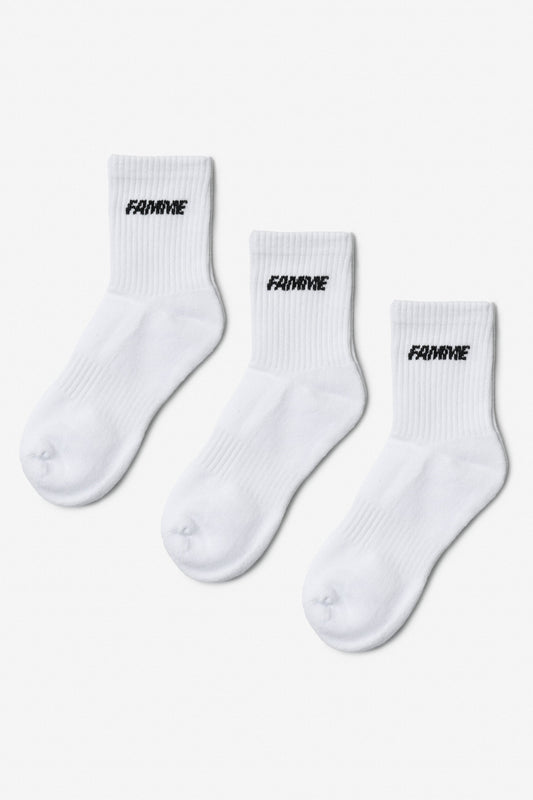
5 signs that you need to replace your running shoes
All shoes will break down over time, even if you haven't worn them for long. There is a golden rule of thumb that running shoes last for about 1000 km +/- 200 km. This, of course, varies from shoe to shoe and how much or little they have been used. In this article, we will give you some advice on wear on the shoe and considerations you can make about replacing your running shoes.
1. You can’t remember the last time you bought new running shoes
Shoes have a lifespan, which we usually measure in kilometers, but even unused shoes can break down over a year or two. The foam, which makes up the most critical part of the shoe's cushioning, will break down and become less responsive and "lively" over time. Even with sporadic use, it is recommended that you update your running shoes once a year and with regular use every 3-6 months.
Our shoes from Famme have a chunky outsole made from a lighter EVA foam, and in combination with the insole from Ortholite, they have a formidable lifespan. The carefully constructed blend of the various features makes them an incredibly good running shoe. Take a look at the feedback we've received on them on our product page.
- Read more about the technology behind the Ortholite sole
2. Your shoes have more wrinkles than your feet after a long bath
One of the best visual indicators of shoe wear is the compression of the midsole's foam. Foam that has lost responsiveness will have horizontal wrinkles and will look "squashed."
This is a better indicator than the rubber outsole on the shoes - some runners and walkers wear through parts of the rubber in less than 150 kilometers due to the friction the shoe and feet experience.
3. Over and inner wear
Look for holes or unusual wear. These are indicators that the shoe is over-worn and should be replaced.
While most people don’t need to replace their shoes every 6 months, it’s a good idea to take a close look at them after 6 months of use. This will give you a good indication of how quickly your shoes are breaking down.
4. Wear on the outsole
Take a look at the bottom of your shoes; if the sole is extremely worn in one area, it's probably time to replace them.
Place the shoe on a flat, even surface at eye level. Most shoes should sit evenly without tipping or rocking. If the lugs (rubber sections) on the outsole are more worn down, the shoe may tip or rock, or even stand sideways.
"Normal" wear occurs on the outside of the heel and evenly across the forefoot. If you notice excessive wear in other areas, this may indicate that the shoe is worn out, or that you need a different type of shoe for your biomechanical needs.
5. Everything starts to hurt
It would be something if you never had to buy a new pair of shoes again. But the longer you use a shoe's lifespan, the less support and cushioning it will have, leading to extra stress and fatigue for your feet, calves, knees, and hips.
Take a look at our article on pronation, overpronation, and underpronation and the pains that can arise from it.
Do your running shoes feel flat, or have you noticed minor irritations in your knees or feet? If you experience pain, and this pain seems to correlate with your shoes that are starting to become old, replacing them with a new, fresh pair can provide welcome relief for your body.
If you think the shoes have caused miswear and wear in various parts of your body, it will be necessary to look at preventive measures so the pain does not worsen. Take a look at our article on injury prevention training.
Tips for maintaining quality
- Keep them dry. After rain or intense use that has led to sweat, fill them with newspaper or similar and let them air dry. Only perform superficial cleaning of dirt and similar on your sports or running shoes and never put them in the washing machine. Take a look at our article if you’re in doubt about how to wash shoes!
Our versatile shoes can, however, be washed in the washing machine. Remove the laces and insole and set the washing machine to 30 degrees with low spin


